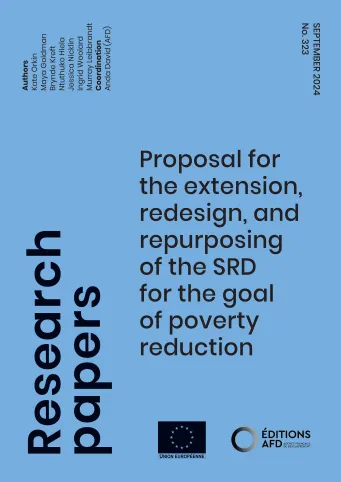Share the page
Proposal for the extension, redesign, and repurposing of the SRD for the goal of poverty reduction
Published on

The study examines the special COVID-19 Social Relief of Distress grant (hereafter ‘SRD’) and provides recommendations to maximise its impact on poverty reduction. The SRD showed itself to be an excellent investment of government spending because it reduces poverty and can increase job search. The SRD in its current form has led to major reductions in food poverty. Without it, just over a quarter (26 percent) of the South African population (15.5 million individuals) live below the 2024 food poverty line of R760 per month (a measure of extreme poverty), without enough income to buy a basic basket of food items necessary for survival. We estimate that the current SRD value of R370 per month reduces this number by at least 3.8 million. This is a roughly 24% reduction in the incidence of extreme poverty. Further, we estimate that the current SRD could lead to a 48% reduction (from 10.45%) in the depth of extreme poverty. We argue that it is important to implement a more permanent version of the SRD that will continue to support the policy goal of reducing the number of people in poverty. We model the effects of different targeting rules, income eligibility thresholds, and grant amounts for the new grant on the number of beneficiaries, coverage of the poor, incidence of poverty, and cost of the grant. On the basis of these estimated outcomes, we recommend that the budget allocation to the grant be increased. We go on to propose four immediate methods to increase the potential impacts of the grant while a) keeping the cost within a fiscally feasible range and b) ensuring that the number of beneficiaries can be varied if needed depending on the fiscal situation.
This study is part of a research project supported by the EU-AFD Research Facility on Inequalities.
Useful Information
-
Authors
-
Kate Orkin, Maya Goldman, Brynde Kreft, Ntuthuko Hlela, Jessica Nicklin, Ingrid Woolard, Murray Leibbrandt
-
Coordinators
-
Edition
-
323
-
Number of pages
-
110
-
ISSN
-
2492 - 2846
-
Collection
-
Research Papers
